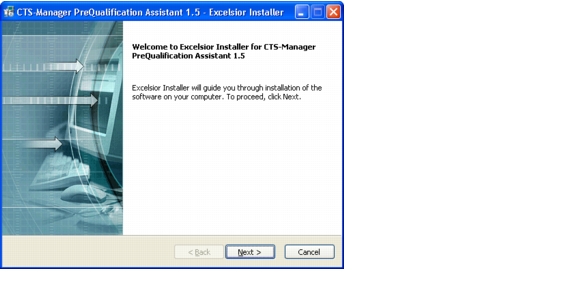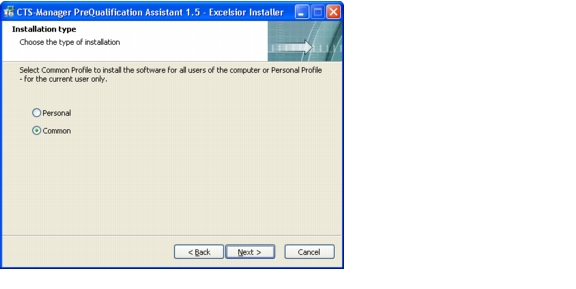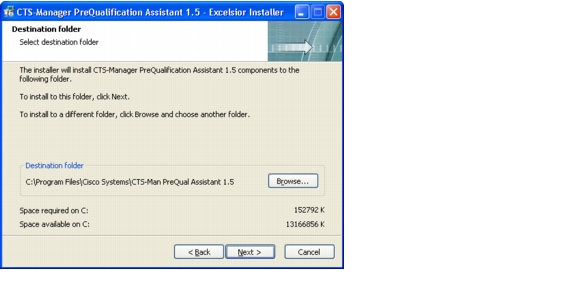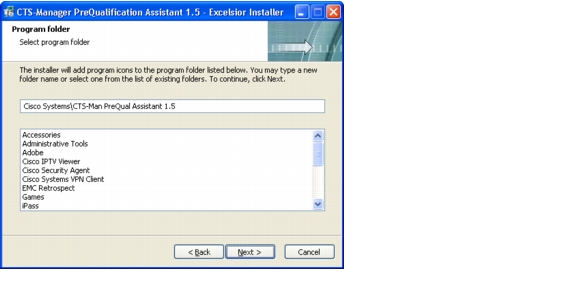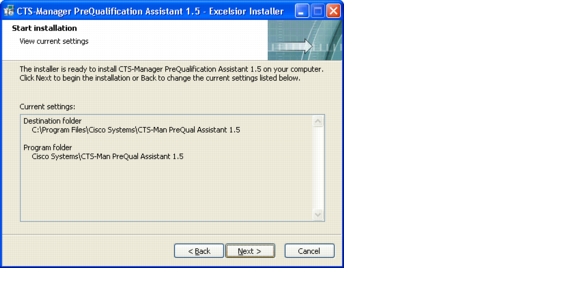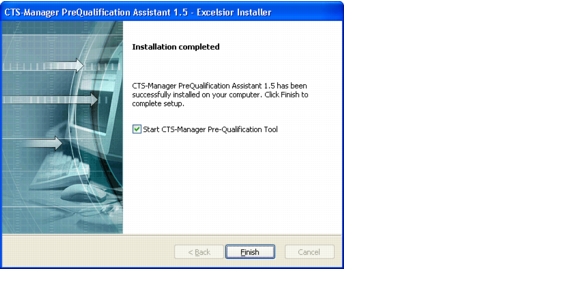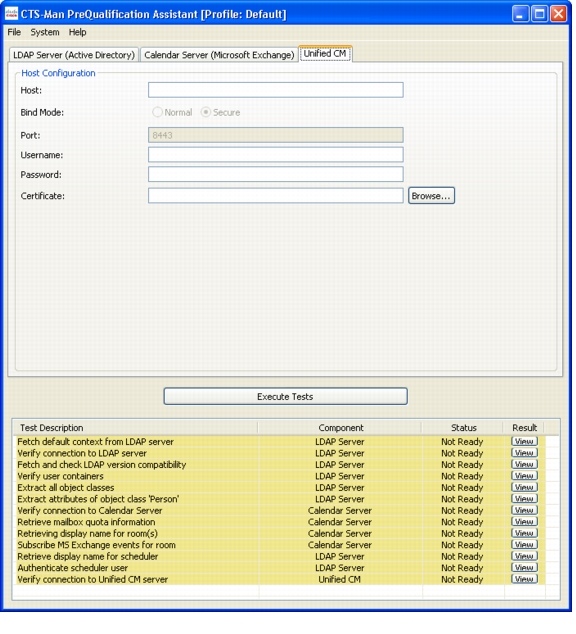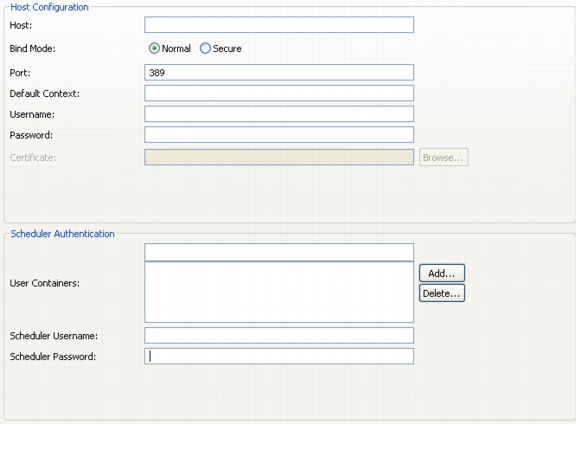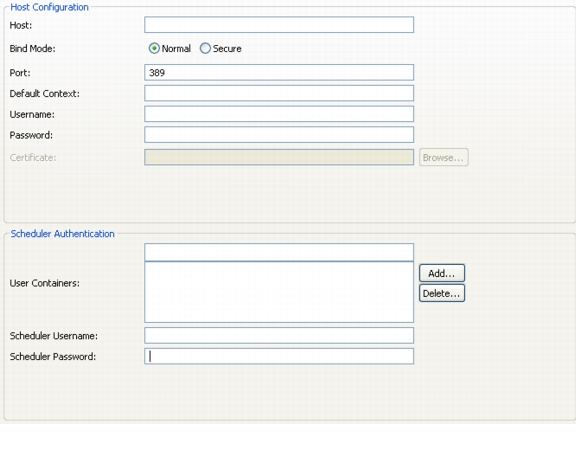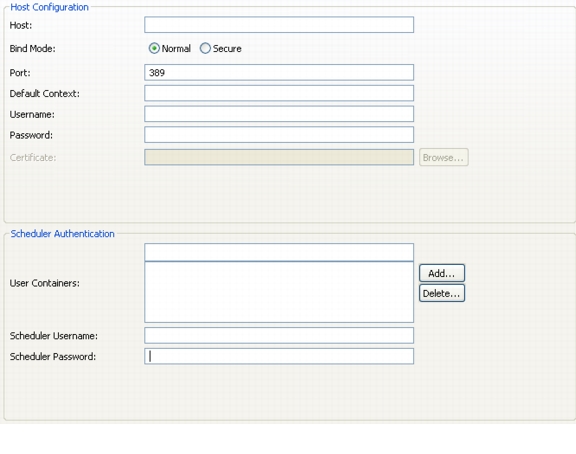

-
Cisco TelePresence Manager 1.5 Administration and Installation Guide
-
Preface
-
End User License Agreement
-
General Information About the Cisco TelePresence Manager
-
Pre-Install System Set Up for Cisco TelePresence Manager
-
Configuring Microsoft Exchange for Cisco TelePresence Manager
-
Configuring IBM Domino Server for Cisco TelePresence Manager
-
Configuring Cisco Unified CM for Cisco TelePresence Manager
-
Installing and Configuring Cisco PreQualification Assistant
-
Installing or Upgrading Cisco TelePresence Manager
-
Initializing Cisco TelePresence Manager
-
Additional Installation Configurations for Cisco TelePresence Manager
-
Monitoring Cisco TelePresence Manager
-
CTS-MAN Emails and End-User Web UI
-
Supported MIBs for Cisco TelePresence Manager
-
Troubleshooting Cisco TelePresence Manager
-
Table Of Contents
Installing and Configuring Cisco PreQualification Assistant
Pre-Configuration Procedure Guidelines for Checking Initial Network Set-up
Installing the PreQualification Assistant Tool
Running the Tool - Using the Tool Application Window
Test Configuration Forms Window
Using Test Configuration Forms
Cisco Unified CM Test Configuration Form
Test(s) Enabled by this Test Configuration Form
Test Configuration Forms in a Generic Environment
LDAP (Generic) Test Configuration Form
Test Configuration Forms in a Microsoft Exchange Environment
LDAP Server (Active Directory) Test Configuration Form
Calendar Server (Microsoft Exchange) Test Configuration Form
Test Configuration Forms in an IBM Domino Environment
LDAP (Domino Directory) Test Configuration Form
Calendar Server (IBM Domino) Test Configuration Form
Installing and Configuring Cisco PreQualification Assistant
Revised: May 3, 2011, OL-13673-04
First Published: November 27, 2006Contents
•
Pre-Configuration Procedure Guidelines for Checking Initial Network Set-up
•
Installing the PreQualification Assistant Tool
•
Running the Tool - Using the Tool Application Window
•
Test Configuration Forms Window
•
Using Test Configuration Forms
•
Calendar Server (Microsoft Exchange) Test Configuration Form
•
Test Configuration Forms in an IBM Domino Environment
•
Calendar Server (IBM Domino) Test Configuration Form
Introduction
This document explains how to install and configure the Cisco TelePresence Manager PreQualification Assistant tool.
It is important to install and run the PreQualification Assistant to ensure that the pre-configuration set-up is performed correctly. The data you enter into the Tool Test Configuration forms are used to verify connections to the servers and validate data from them to be used to configure CTS-Manager.
Pre-Configuration Procedure Guidelines for Checking Initial Network Set-up
This table provides a guideline for the procedures you will need to reference in order to check the set-up of the the network before installing the Cisco TelePresence Manager.
This table also lists the next couple to tasks to be performed when installing the CTS-Manager system.
Table 6-1 Pre-Configuration Guideline for Testing the Set-Up of the System Network for CTS-Manager
Install and configure PreQualification Assistant
Install, configure, and run the PreQualification Assistant to ensure that your pre-configuration set-up is performed correctly. The data you enter into the Tool Test Configuration forms are used to verify connections to the servers and get data from them to be used to configure CTS-Manager
Current Chapter.
Installing or Upgrading CTS-Manager software
The installation requires information about your network and the rules for finding and exchanging information. This information was set up during the pre-configuration tasks.
Chapter 7, "Installing or Upgrading Cisco TelePresence Manager"
Initializing CTS-Manager
After installing the CTS-Manager software, the next process is initializing Cisco TelePresence Manager to enable access to information sources such as Microsoft Exchange Server for meeting requests from Microsoft Outlook, Active Directory for accessing user and conference room information, and Cisco Unified Communications Manager for conference room availability and telephone support
Installing the PreQualification Assistant Tool
After you have downloaded the PreQualification executable, use the following procedures to install the tool.
Step 1
Double-click the executable to begin the install process. After the Installer window appears, click the Next button.
Figure 6-1 Excelsior Installer Window
Step 2
Specify if the application is to be a personal profile or can be used by others. Then click the Next button.
Figure 6-2 Installation Type Window
Step 3
Review and accept the destination folder defaults and click the Next button.
Figure 6-3 Destination Folder Window
Step 4
Review the program folder destination, accept the defaults and click the Next button.
Figure 6-4 Program Folder Window
Step 5
In the Start Installation window, review the folder information and if correct, click the Next button.
Figure 6-5 Start Installation Window
Step 6
If you are ready to finalize the installation, click Finish button.
Note
Uncheck the Start checkbox if you don't want to launch the tool immediately after completing the installation.
Figure 6-6 Installation Completed Window
Running the Tool - Using the Tool Application Window
The CTS-Manager PreQualification tool allows administrators to determine if any changes are needed to their network to support a CTS-Manager installation
Figure 6-7 Tool Application Window
The Tool runs a series of tests to determine if your LDAP server, Calendar server, and Cisco Unified CM configurations meet the requirements to support CTS-Manager. The set of tests you run are determined by the Calendar server running on your network (IBM Domino or Microsoft Exchange). You can also run a set of tests without specifying a Calendar server.
In order to run a series of tests you need to provide the Tool with configuration information for your LDAP server, Calendar server, and Cisco Unified CM. The three tabbed windows display the Test forms used to enter configuration data.
The Test Status window displays the status of each test. Once you have run a set of tests you can view the results of each test in a Test Result window. The test results contain troubleshooting data needed to prepare your LDAP server, Calendar server, and Cisco Unified CM to work with CTS-Manager.
If additional analysis is required to prepare your network, you can create a zip file for technical support that includes all the test results.
The Tool application window has three main areas which are explained in the next section.
Menu Commands
The following sections cover the commands in the File menu.
File Menu Commands
•
The New Profile command saves all the Test form field values you have entered to a profile that can be used again.
•
The Delete Profile command asks you to confirm your deletion of the active profile.
•
The Load Profile command lists the saved profiles. You can choose which profile you want to use to run the PreQualification tests.
Figure 6-8 File Menu Commands
System Menu Command
•
The Select Calendar Server lists the Calendar servers. Choose Exchange, Domino, or None to display the corresponding Test Configuration forms.
•
The Execute Tests command performs the same function as the Execute Test button displayed above the Test Status list at the bottom of the application window.
Figure 6-9 System Menu Commands
•
The Collect Logs command collects all the tests you've run into a zip file to make it easy to transport the results to Cisco Technical Support.
–
If you check the Include Config Settings checkbox, the values you entered into the Test Configuration forms are collected and included in the zipped report.
Figure 6-10 System Menu Commands
Test Configuration Forms Window
The Test Configuration Forms window presents three areas, selected by individual tabs. The tabs display the LDAP/Calendar server configuration you've chosen from the Select Calendar Server command in the System menu.
Figure 6-11 The Forms Tabs Window
Note
The Test Configuration Form fields and how they are used are described in the Using Test Configuration Forms section.
Test Status Window
The bottom of the application window lists the tests available.
Figure 6-12 The Test Status Window
Table 6-2 Test Status Columns
Using Test Configuration Forms
There are three Test Configuration forms (LDAP server, Calendar server, and Cisco Unified CM). There are also three network environments (Exchange calendar server, Domino calendar server, and no calendar server). The Test Configuration forms are used to collect the data required to run the relevant tests for each network environment The sections below define the Test Configuration forms for each network environment.
Cisco Unified CM Test Configuration Form
The Cisco Unified CM Test Configuration form requires the same data for all three network environments.
Figure 6-13 The Cisco Unified CM Test Configuration Form
Test(s) Enabled by this Test Configuration Form
•
Verify connection to Cisco Unified CM server
Test Configuration Forms in a Generic Environment
You can use the PreQualification Tool to test your LDAP server without specifying a calendar server. This applies when the user selects Calender Server, "None."
LDAP (Generic) Test Configuration Form
Figure 6-14 The LDAP Server (Generic) Test Configuration Form
Test(s) Enabled by this Test Configuration Form
•
Verify connection to LDAP server
•
Verify user containers
•
Extract all object classes
•
Extract attributes of object class `Person'
Test Configuration Forms in a Microsoft Exchange Environment
LDAP Server (Active Directory) Test Configuration Form
Figure 6-15 The LDAP Server (Active Directory) Test Configuration Form
Test(s) Enabled by this Test Configuration Form
•
Verify connection to LDAP server
•
Verify user containers
•
Extract all object classes
•
Extract attributes of object class "Person"
•
Retrieve display name for scheduler
•
Authenticate scheduler user
Calendar Server (Microsoft Exchange) Test Configuration Form
Figure 6-16 The Calendar Server (Microsoft Exchange) Test Configuration Form
Test(s) Enabled by this Test Configuration Form
•
Verify connection to Calendar Server
•
Retrieve mailbox quota information
•
Retrieving display name for room(s)
•
Subscribe MS Exchange events for room
Test Configuration Forms in an IBM Domino Environment
LDAP (Domino Directory) Test Configuration Form
Figure 6-17 The LDAP Server (Domino Directory) Test Configuration Form
Test(s) Enabled by this Test Configuration Form
•
Verify connection to LDAP server
•
Verify user containers
•
Extract all object classes
•
Extract attributes of object class `Person'
•
Retrieve display name for scheduler
•
Authenticate scheduler user
Calendar Server (IBM Domino) Test Configuration Form
Figure 6-18 The Calendar Server (IBM Domino) Test Configuration Form
Note
For IBM Domino, both DIIOP and HTTP ports must be setto allow anonymous access or the connection test will fail. In IBM Domino Administrator, go to Configuration > Ports > Internet Ports. Under the Web and DIIOP tabs in the Authentication Options section, make sure that Anonymous is selected.
Test(s) Enabled by this Test Configuration Form
•
Verify connection to Calendar Server
•
Retrieve mailbox quota information
•
Retrieve room to database mapping test
•
Retrieving display name for room(s)
•
Retrieve samples of calendar documents

 Feedback
Feedback